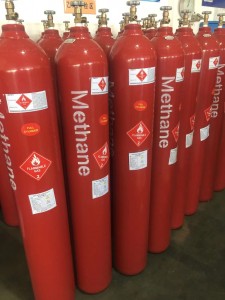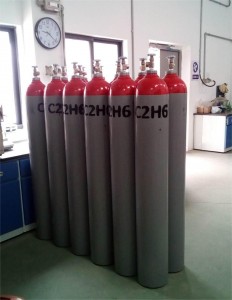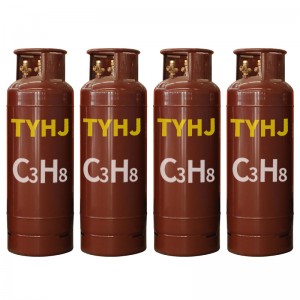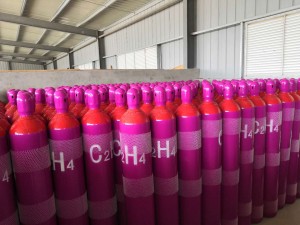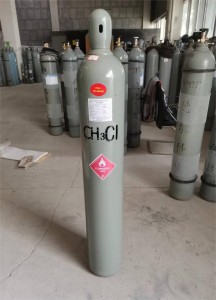Combustible gas is divided into single combustible gas and mixed combustible gas, which has the characteristics of being flammable and explosive. The concentration limit value of a uniform mixture of combustible gas and combustion-supporting gas that causes explosion under standard test conditions. The combustion-supporting gas can be air, oxygen or other combustion-supporting gases.
The explosion limit refers to the concentration limit of combustible gas or vapor in the air. The lowest content of combustible gas that can cause an explosion is called the lower explosion limit; the highest concentration is called the upper explosion limit. The explosion limit varies with the components of the mixture.
Common flammable and explosive gases include hydrogen, methane, ethane, propane, butane, phosphine and other gases. Each gas has different properties and explosion limits.
Hydrogen
Hydrogen (H2) is a colorless, odorless, tasteless gas. It is a colorless liquid at high pressure and low temperature and is slightly soluble in water. It is extremely flammable and can explode violently when mixed with air and encounter fire. For example, when mixed with chlorine, it can explode naturally under sunlight; when mixed with fluorine in the dark, it can explode; hydrogen in a cylinder can also explode when heated. The explosion limit of hydrogen is 4.0% to 75.6% (volume concentration).
Methane
Methane is a colorless, odorless gas with a boiling point of -161.4°C. It is lighter than air and is a flammable gas that is extremely difficult to dissolve in water. It is a simple organic compound. A mixture of methane and air in an appropriate proportion will explode when encountering a spark. The upper explosion limit % (V/V): 15.4, the lower explosion limit % (V/V): 5.0.
Ethane
Ethane is insoluble in water, slightly soluble in ethanol and acetone, soluble in benzene, and can form explosive mixtures when mixed with air. It is dangerous to burn and explode when exposed to heat sources and open flames. It will produce violent chemical reactions when in contact with fluorine, chlorine, etc. Upper explosion limit % (V/V): 16.0, lower explosion limit % (V/V): 3.0.
Propane
Propane (C3H8), a colorless gas, can form explosive mixtures when mixed with air. It is dangerous to burn and explode when exposed to heat sources and open flames. It reacts violently when in contact with oxidants. Upper explosion limit % (V/V): 9.5, lower explosion limit % (V/V): 2.1;
N.butane
n-Butane is a colorless flammable gas, insoluble in water, easily soluble in ethanol, ether, chloroform and other hydrocarbons. It forms an explosive mixture with air, and the explosion limit is 19%~84% (evening).
Ethylene
Ethylene (C2H4) is a colorless gas with a special sweet smell. It is soluble in ethanol, ether and water. It is easy to burn and explode. When the content in the air reaches 3%, it can explode and burn. The explosion limit is 3.0~34.0%.
Acetylene
Acetylene (C2H2) is a colorless gas with an ether smell. It is slightly soluble in water, soluble in ethanol, and easily soluble in acetone. It is extremely easy to burn and explode, especially when it comes into contact with phosphides or sulfides. The explosion limit is 2.5~80%.
Propylene
Propylene is a colorless gas with a sweet smell in normal state. It is easily soluble in water and acetic acid. It is easy to explode and burn, and the explosion limit is 2.0~11.0%.
Cyclopropane
Cyclopropane is a colorless gas with the smell of petroleum ether. It is slightly soluble in water and easily soluble in ethanol and ether. It is easy to burn and explode, with an explosion limit of 2.4~10.3%.
1,3 Butadiene
1,3 Butadiene is a colorless and odorless gas, insoluble in water, easily soluble in ethanol and ether, and soluble in cuprous chloride solution. It is extremely unstable at room temperature and easily decomposes and explodes, with an explosion limit of 2.16~11.17%.
Methyl chloride
Methyl chloride (CH3Cl) is a colorless, easily liquefied gas. It tastes sweet and has an ether-like smell. It is easily soluble in water, ethanol, ether, chloroform and glacial acetic acid. It is easy to burn and explode, with an explosion limit of 8.1 ~17.2%
Post time: Dec-12-2024








